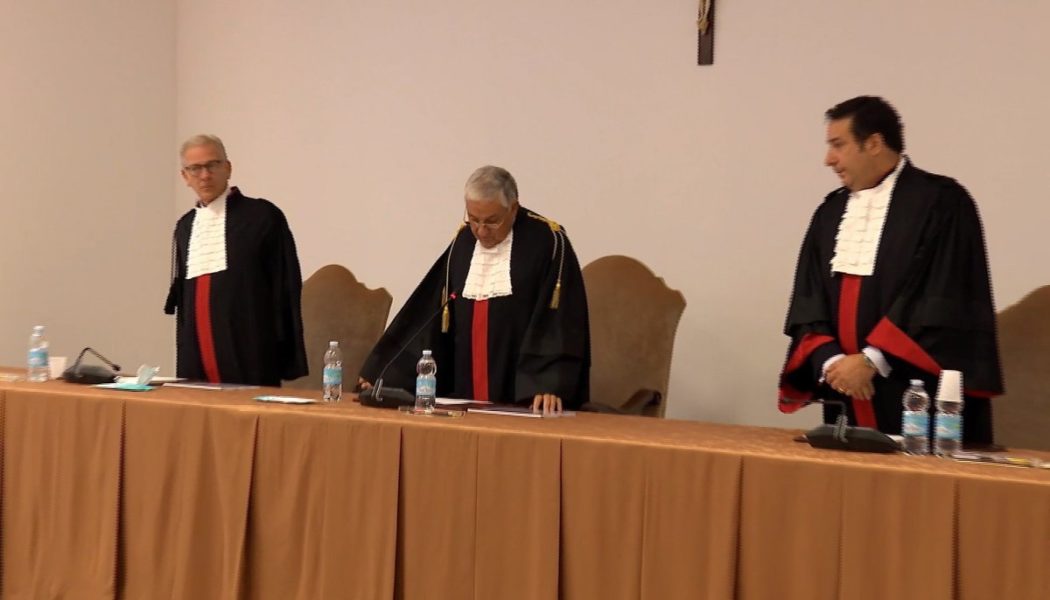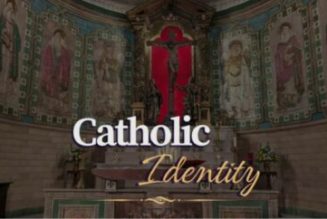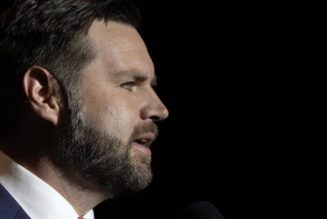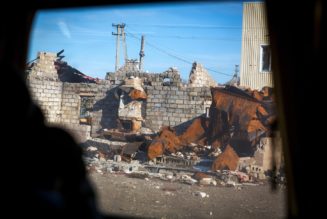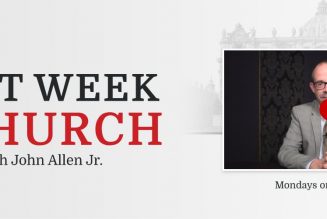
|
Listen to this story: |
ROME – Every year, certain storylines dominate news coverage of the Vatican. Some are largely positive, though many tend to be negative, such as the clerical abuse scandals that have been a strong contender for biggest Vatican story of the year for each of the last 20 years.
Reporters being basically pack animals, the inevitable effect of a few stories looking so large is that others tend to slip through the cracks. That’s not always a measure of their relative importance, but rather the judgments of news organizations about which stories are more likely to sell.
There were plenty of well-covered storylines out of the Eternal City this year, from the pope’s triumphant trip to Iraq in March to his colon surgery over the summer, as well as his highly controversial decision to largely suppress the old Latin Mass. (Given that a subsequent poll of American Catholics found two-thirds unaware Francis had even done anything on the Latin Mass, that development in particular is also a good example of how large numbers of people don’t have to be invested in a story in order for it to make a lot of noise.)
At year’s end, it’s worth a look back at some of the other noteworthy Vatican stories of the year that never quite made the cut, generating some ripples but never a wave in the sea of today’s 24/7 media coverage.
5. Hart and DiMarzio
In the United States, Bishops Joseph Hart in Cheyenne and Nicholas DiMarzio of Brooklyn had become identified with the clerical abuse scandals, in part because both faced their own charges of abuse. Both, however, were cleared by the Vatican’s Congregation for the Doctrine of the Faith, Hart in January and Di Marzio in September.
The cases were different, in that Hart faced a dozen separate charges of abuse while DiMarzio was accused by two persons. In Hart’s case, there are seemed to be a history of dubious personal conduct that lent some credibility to the accusations.
In the end, the Vatican cleared Hart of seven of the accusations and found that the other five couldn’t be proven, but nevertheless rebuked him publicly for what it called his “flagrant lack of prudence” in being alone with minors. In DiMarzio’s case, the congregation simply determined that the two accusations lacked “the semblance of truth.”
In any event, the Hart and DiMarzio cases were reminders in 2021 of an iron-clad law of journalism: When they indict you, it’ll be on the front page; when you’re cleared, it’ll get kicked inside.
Granted, the bitter lesson of the abuse scandals has been that smoke means fire more often than not, and that every accusation must be taken seriously. Hart and DiMarzio are also reminders, however, that accusation is not the same thing as evidence, and that reality often is far messier and more complex than simplistic narratives would suggest.
4. Monsignor Robert Oliver
In itself, the fact that American Monsignor Robert Oliver was let go as chief of staff for the Pontifical Commission for the Protection of Minors in April was no big thing. He’d been in the Vatican for nine years, which is a long run, and his job is among the more frustrating and emotionally draining in the system.
Moreover, it’s not as if his departure signaled a retreat on the cause. His successor is British Father Andrew Small, an Oblate who’s a former foreign policy advisor for the US Bishops and former National Director of the Pontifical Mission Societies. Small is smart, tenacious and on board with the need for reform.
What makes the Oliver ouster noteworthy isn’t the what, but the how. We’re talking about a kind, generous, and completely committed worker who gave almost a decade of his life in service to the Vatican. So, when they decided to cut him loose, did someone high up in the system pull him aside and thank him for a job well done? Did they maybe put together a small going-away party, giving him a papal medal or something?
Nope. Instead, Oliver discovered he was out from a blasé news release, listing people who’d been reappointed to the commission without his name on the list, issued while he was on a brief trip to the States.
In fairness, it’s not just Oliver – that’s how the Vatican treats most of its employees, which is why the place suffers from what I’ve called an “HR pandemic.”
The only reason the Vatican hasn’t imploded from chronic abuse and neglect of its most valuable assets, i.e., its workforce, is that for every Bob Oliver, there’s an Andy Small … another talented, dedicated person willing to answer the bell when the pope calls, no matter how dysfunctional the system may be.
That’s a wonderful thing, but, frankly, it’s no excuse.
3. The Pope and the Rabbis
If you don’t even remember this happened during 2021, no need to feel bad, because it attracted almost no interest anywhere outside Israel. However, in August Pope Francis stirred controversy in the Jewish world for his comments on the Torah, meaning the Jewish law.
“The law (Torah) does not give life,” the pope said during a General Audience on August 11.
“It does not offer the fulfilment of the promise because it is not capable of being able to fulfil it … Those who seek life need to look to the promise and to its fulfilment in Christ.”
For some veteran participants in Jewish-Catholic dialogue, such rhetoric smacked of “supersessionism,” a theological view which holds that Judaism is obsolete now and has been superseded by the Gospel of Christ. The Chief Rabbinate, which is the supreme rabbinic authority for Judaism in Israel, sent a letter of protest to the Vatican, asking for a clarification so that “any derogatory conclusions drawn from this homily are clearly repudiated.”
During a later General Audience in early September, Francis addressed the controversy, saying his comments had been “simply a catechesis … and nothing else.” The suggestion was, he didn’t intend to declare infallible teaching on Judaism or any other subject, so, really, nothing to see here.
In the meantime, Francis’s top deputy for Jewish/Catholic relations, Swiss Cardinal Kurt Koch, sent a letter to the rabbis containing a quote from Francis in 2015: “The Christian confessions find their unity in Christ; Judaism finds its unity in the Torah.” Later, Francis also appeared to try to make amends, issuing greetings for Rosh Hashanah in which he prayed the new year be good “for those who walk faithfully in the law of the Lord.”
This story is a reminder of how narratives control the way popes are seen. Francis is seen as a liberal reformer who favors inter-faith dialogue, so any development suggesting disrespect on his part is played down or ignored. Just imagine, though, what the public reaction might have been had Pope Benedict XVI said exactly the same thing, and you’ll appreciate the point.
2. Lay Movements
In many respects, the Catholic Church is where logic goes to die, and Pope Francis’s crackdown on lay movements in June is a good example of the point. In most respects you might think Francis would be a “let a thousand flowers bloom” kind of guy, and especially favorable to lay initiatives that challenge the clerical grip on power.
Further, Francis is also highly enamored of one of these movements, the Community of Sant’Egidio, which is his go-to option for a wide range of matters, including taking care of the refugees he periodically brings back to Rome.
Yet no pope in recent memory has been tougher on the lay movements than Francis, as his June decree illustrates. In effect, it imposed term limits for the leaders of these movements, whose founders heretofore tended to run the show for life, and also ordered the movements to ensure that all members have a voice in choosing leaders.
In part, the move was simply a response to the fact that, over the years, the Vatican has fielded countless complaints from current and former members of these groups, usually centering on abuses of power by leadership. Ensuring turnover and a democratic method of succession is, therefore, a natural administrative response.
Beyond that, many observers believe the lay movements are also the next frontier in the Church’s abuse scandals – that dioceses, seminaries and religious orders have largely cleaned up their acts by now, but these semi-autonomous lay organizations, with only nebulous oversight by church authorities, remain a potential mine field.
In any event, this was an important display of papal power with potentially far-reaching consequences, which didn’t really light up the scoreboard in terms of American news coverage because the movements are a much bigger deal in other parts of the Catholic world.
1. The Other Trial
When Vatican prosecutors decided over the summer to indict a sitting cardinal and former papal chief of staff as part of their investigation of a London land deal gone wrong, it ensured the subsequent trial would become a cause célèbre, drawing intense interest. They may regret that decision now, since their “trial of the century” seems as if it might collapse under its own weight, but anyway, people are still paying attention.
In the meantime, the other big Vatican trial of the year sort of flew under radar – the case pivoting on the Preseminary of St. Pius X, until recently located on Vatican grounds, and featuring charges that one minor seminarian had sexually abused another.
Father Gabrielle Martinelli, who’s now 28, was accused of having sexually abused a slightly younger pre-seminarian, identified only as “L.G.”, between 2007 and 2012, at a time when both were still minors. (Martinelli entered the pre-seminary in 2005 and remained there until 2013.) Also charged was Father Enrico Radice, the rector of the facility at the time the alleged abuse occurred, and who was accused of hampering the investigation – what, in American parlance, would be known as “obstruction of justice.”
In part, many reporters may have decided to take a pass on this story because it was just so complicated.
For one thing, when it’s one minor allegedly abusing another, it’s not as clear-cut as when an adult is the alleged perpetrator. For another, “L.G.” appeared to give shifting accounts of events, raising issues of credibility. To muddy the waters even further, there were apparently deep tensions among the pre-seminarians over the Latin Mass, with Martinelli belonging to one camp (upholding the post-Vatican II Mass) and his accuser to the other (favoring the older rite), and it was impossible to know to what extent those rivalries may have exacerbated things.
In the end, both Martinelli and Radice were acquitted. The court accepted that Martinelli had a sexual relationship with another pre-seminarian, in addition to his accuser, but found no evidence that second relationship was coercive.
Here’s why the trial was a big deal.
A key point that emerged during the trial was that nobody really knew who was in charge of the pre-seminary. It had been founded by an Italian religious order, the Opera Don Folci, and was sponsored by the Italian Diocese of Como. Yet because it was located on Vatican grounds, most people tended to assume it was overseen by the Archpriest of St. Peter’s Basilica, or, maybe, the Government of the Vatican City State.
In reality, it was a classic case of when everybody’s in charge, no one is. As a result, the pre-seminary operated in a kind of oversight vacuum, in which nobody was minding the store.
Think about the timing: The alleged abuse occurred during the Benedict XVI years, when the abuse scandals were already well known and reform campaigns were allegedly ushering in a new day. Even if there was no abuse, there clearly was a sexualized environment. The lack of clarity about oversight actually persisted all the way up to 2021, when Francis ordered the facility moved off Vatican grounds – making it clear that whoever’s problem it is now, it’s not the pope’s.
One has to ask how it’s possible that the Vatican had a residence for minor boys on its own territory, one in which those boys had regular contact with all manner of older seminarians and clergy, and yet no one in authority, at at least three distinct levels of the church, apparently took it upon themselves to exercise any quality control until the dam broke.
That’s a worrying insight about the state of reform, and there’s no reason to believe the problem of overlapping jurisdiction to which it points has been resolved. One can only wonder how many more institutions, schools, movements, and other Catholic entities may be in similar circumstances, albeit not on Vatican grounds – and who’s minding the store in those places too.
Follow John Allen on Twitter: @JohnLAllenJr
Join Our Telegram Group : Salvation & Prosperity
